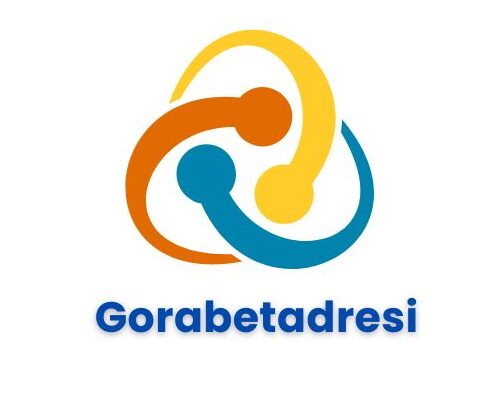In today’s digital-first business environment, managing technology expenses has become a critical challenge for organizations of all sizes. With rising IT costs, cloud adoption, software subscriptions, and telecom services, companies must implement effective Technology Expense Management (TEM) strategies to optimize spending, reduce waste, and improve financial accountability.
This comprehensive guide explores the importance of Technology Expense Management, key challenges, best practices, and tools to help businesses gain better control over their IT budgets.
What is Technology Expense Management (TEM)?
Technology Expense Management (TEM) refers to the process of tracking, analyzing, and optimizing an organization’s IT-related expenditures. This includes:
- Hardware & Software Costs (laptops, servers, SaaS subscriptions)
- Telecom & Network Expenses (mobile plans, internet services, VoIP)
- Cloud Computing Costs (AWS, Azure, Google Cloud)
- IT Support & Maintenance Fees
- Shadow IT & Unauthorized Spending
TEM helps businesses eliminate unnecessary expenses, negotiate better contracts, and ensure compliance with vendor agreements.
Why is Technology Expense Management Important?
With IT budgets growing rapidly—Gartner predicts global IT spending to reach $5.1 trillion in 2024—companies must ensure they are getting maximum value from their investments. Here’s why TEM is crucial:
1. Cost Savings & Waste Reduction
Many organizations overspend on unused software licenses, redundant services, or over-provisioned cloud resources. TEM identifies inefficiencies and cuts unnecessary costs.
2. Improved Financial Visibility
TEM provides real-time insights into IT spending, helping finance teams allocate budgets more effectively.
3. Vendor & Contract Optimization
By analyzing vendor contracts, businesses can renegotiate terms, avoid auto-renewal traps, and secure better pricing.
4. Compliance & Security Risks
Unauthorized SaaS apps (Shadow IT) can lead to security vulnerabilities. TEM helps track all IT assets and enforce compliance.
5. Scalability & Future Planning
With accurate expense data, companies can make informed decisions about future IT investments.
Key Challenges in Technology Expense Management
Despite its benefits, managing IT expenses comes with several challenges:
1. Complex IT Ecosystems
Modern businesses use hundreds of SaaS apps, cloud services, and telecom providers, making expense tracking difficult.
2. Lack of Centralized Visibility
Without a unified system, IT spending remains siloed across departments, leading to inefficiencies.
3. Dynamic Pricing Models
Cloud and SaaS providers often change pricing structures, making cost forecasting challenging.
4. Shadow IT & Uncontrolled Spending
Employees may subscribe to unauthorized tools, increasing security risks and costs.
5. Manual Processes & Human Errors
Spreadsheet-based tracking is error-prone and time-consuming.
Best Practices for Effective Technology Expense Management
To overcome these challenges, businesses should adopt the following best practices:
1. Conduct a Comprehensive IT Audit
- Identify all IT assets, contracts, and subscriptions.
- Track usage to find underutilized or redundant services.
2. Implement a Centralized TEM Platform
Use AI-powered TEM software (like Tangoe, Calero, or Codability) to automate expense tracking, invoice processing, and cost optimization.
3. Optimize Cloud & SaaS Spending
- Right-size cloud resources to avoid over-provisioning.
- Use reserved instances for long-term cost savings.
- Monitor SaaS usage and eliminate unused licenses.
4. Negotiate Better Vendor Contracts
- Avoid auto-renewals without review.
- Leverage usage data to negotiate discounts.
- Consolidate vendors for bulk pricing benefits.
5. Enforce IT Procurement Policies
- Require approval for all new software purchases.
- Implement a Single Sign-On (SSO) system to monitor app usage.
6. Automate Invoice & Expense Tracking
- Use OCR and AI to process invoices automatically.
- Set up alerts for billing anomalies or unexpected spikes.
7. Regularly Review & Adjust Strategies
- Conduct quarterly TEM reviews.
- Adjust budgets based on changing business needs.
Top Technology Expense Management Tools
Several TEM solutions help businesses streamline IT cost management:
| Tool | Key Features |
|---|---|
| Tangoe | Telecom & cloud expense management, contract optimization |
| Calero | SaaS & telecom expense tracking, usage analytics |
| Cloudability (Apptio) | Cloud cost optimization, AWS/Azure cost monitoring |
| Flexera | IT asset management, SaaS optimization |
| Zylo | SaaS management, license optimization |
These tools provide automated expense tracking, vendor management, and cost-saving recommendations.
Future Trends in Technology Expense Management
As IT environments evolve, TEM strategies must adapt. Key trends include:
1. AI & Predictive Analytics for Cost Optimization
AI-driven tools will forecast spending trends and recommend cost-cutting measures.
2. Increased Focus on FinOps (Financial Operations)
FinOps bridges IT, finance, and operations to align cloud spending with business goals.
3. Greater Adoption of SaaS Management Platforms (SMPs)
Businesses will rely more on SMPs to control SaaS sprawl.
4. Blockchain for Transparent IT Spending
Blockchain could improve contract transparency and reduce billing disputes.
Conclusion
Effective Technology Expense Management (TEM) is no longer optional—it’s a necessity for businesses looking to optimize IT budgets, reduce waste, and improve financial control. By leveraging AI-powered TEM tools, enforcing procurement policies, and regularly auditing expenses, companies can achieve significant cost savings while maintaining operational efficiency.
As technology continues to evolve, organizations that prioritize TEM best practices will gain a competitive edge by maximizing ROI on their IT investments.
Ready to take control of your IT spending? Start by auditing your technology expenses today!











